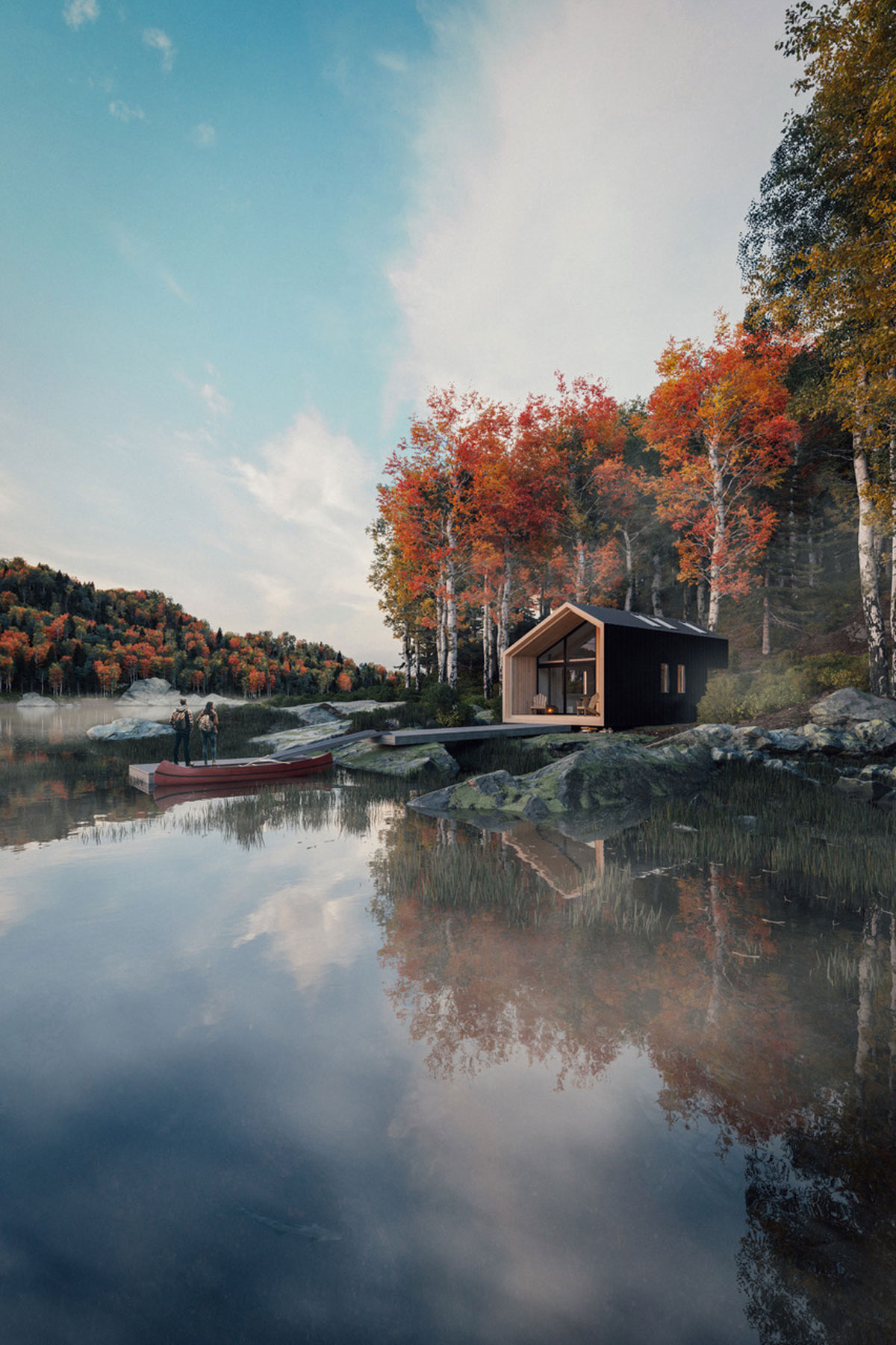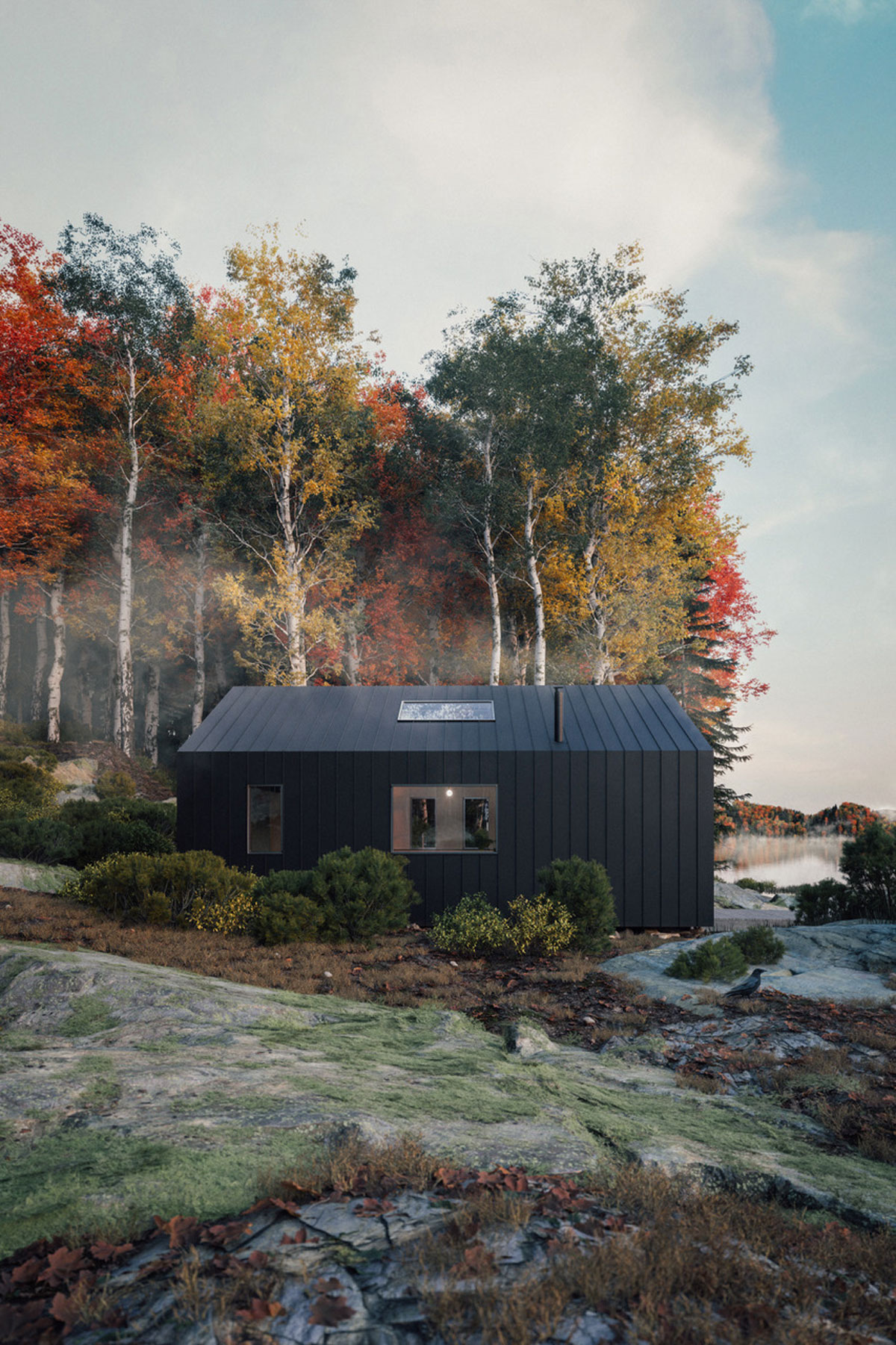- Share
- Like
- Tweet
- Digg
- Tumblr
- VKontakte
- Love This
- Odnoklassniki
- Meneame
- Blogger
- Amazon
- Yahoo Mail
- Gmail
- AOL
- Newsvine
- HackerNews
- Evernote
- MySpace
- Mail.ru
- Viadeo
- Line
- Comments
- SMS
- Viber
- Telegram
- Subscribe
- Skype
- Facebook Messenger
- Kakao
- LiveJournal
- Yammer
- Edgar
- Fintel
- Instapaper
- Copy Link
The Backcountry Hut Company has been selected by IDS Toronto to provide the Design Concept House for the latest edition taking place from January 17 to 20, 2019. Responding to IDS’ theme ‘Power of Design’, this year’s full-scale concept house enables visitors to enter and experience a new ‘kit-of-parts’ approach to the creation of small scale structures. The design concept presents a modernist interpretation of the notion of rustic wilderness living, based on the spirit of Canadian outdoor culture.
Founded in Vancouver, British Columbia, The Backcountry Hut Company was conceived to assist individuals and organizations in the design, planning and construction of small scale outdoor structures. The approach consists of a prefabricated, flat-packed, mass-customizable system that can be configured to meet a wide range of individual needs. The Great Lakes Cabin – designed by Leckie Studio – is being presented at IDS as the latest edition of The Backcountry Hut Company product offering. The system provides a premium quality shelter suitable for remote locations, with capabilities to withstand the harshest weather conditions.
This year IDS’s visitors will experience a ‘concept house’ that goes beyond aesthetics and advocates for more freedom in empowering people to build their own shelter. Our main goal when we designed the Backcountry Hut cabins was to contribute to the global conversation about how architecture is evolving. We are creating architectural systems that employ innovations in construction technology. The Backcountry Hut is a distinctly Canadian product, and embodies the spirit of both cabin culture and the maker movement.
– Michael Leckie, Principal architect of Leckie Studio and co-founder of The Backcountry Hut Company
The aesthetic and materials of the Great Lakes Cabin takes cues from the environment of the landscape of the Canadian Shield, Cottage Country, and the Great Lakes Region of North America. The compact structure is crafted to have a minimal environmental impact on the site. Every square inch of its 670 square foot (62.2 square metres) footprint is utilized, featuring a lofted sleeping area, a bathroom, and a covered exterior deck. The structural system is comprised of a sustainably harvested engineered timber frame, clad with prefabricated insulated wall/roof/floor panels. The envelope system can be customized to meet Net Zero and Passive House standards.
The cabin interior is divided into two different spaces with separate functions: a sleeping loft, and an open plan ‘great room’ for cooking, living, and dining. A fully-glazed end wall creates a large aperture for a strong visual connection with nature.
Inspired by the idea of Ikea’s founder Ingvar Kamprad of providing affordable well-designed products ‘for the many people’, The Backcountry Hut Company has developed a kit-of-parts solution to shelter through the provision of a flat-packed system with the following characteristics:
Prefabrication: The ‘kit-of-parts’ hut system is designed as an engineered wood post-and-beam frame that is then layered with prefabricated insulated panels. A simple nail-on window system is provided, and prefabricated cladding modules are then applied.
Modularity: The standardized structural modules can be combined to adjust the size, and adapt the structure for different needs, whether for one person, or a group.
Ease of Assembly: The components easily fit together with pre-engineered connections, and the scale of the building affords it’s assembly by a group of volunteers with minimal tools, through the use of traditional ‘barn-raising’ techniques. The system is built on a pile system with minimal site work required, diminishing the building’s environmental impact on the site
Customization: The shell and interior fit-out are separate platforms, allowing for customization for a range of possible needs and scenarios – whether the intended use is for outdoor recreation or urban living.
Sustainability: The cabin uses FSC certified lumber and engineered wood products, 100% recyclable components, and adopts a zero-waste philosophy.
The Backcountry Hut Company’s cabins are built from modules that are assembled on site, resting on concrete or steel piers. This method is intended to allow owners to construct them in remote areas, without the need for heavy machinery. The hut is also designed to be self-sufficient and fully equipped for a comfortable stay. Heating is generated by a wood-burning stove, and ventilation is controlled by strategically placed skylights.
The Great Lakes Backcountry Hut allows consumers a glimpse into how existing prefabrication techniques can be applied to a new DIY approach to cabin building. At a time when the pace of our lives seems to be ever increasing, it feels like a great opportunity to engage the inherent qualities of good design – function, beauty, and materiality and help us to create places to relax and recharge. We seek to create an environment that’s highly functional, but at the same time feels like home. We operate with a straightforward approach, producing cabins which are beautiful, rugged, and refined. Every detail is carefully considered.
– Wilson Edgar, Co-founder of The Backcountry Hut
We wanted to create something simple, but significant. Using an array of materials – steel, granite, concrete, and wood, we have created some key features. We have a funky sitting area off of the hut, which extends your living space into the outdoors – a viewing point that creates a secondary space to take everything in. We have a unique backdrop to our “lake” feature, tall birches and undulating surfaces of greenery around the hut. Custom pieces were created in the different features of the display. A great lakes theme, with a modern twist.
– D’Arcy Flattery, Principal of Flattery Landscape Architects – responsible for the installation landscape design


